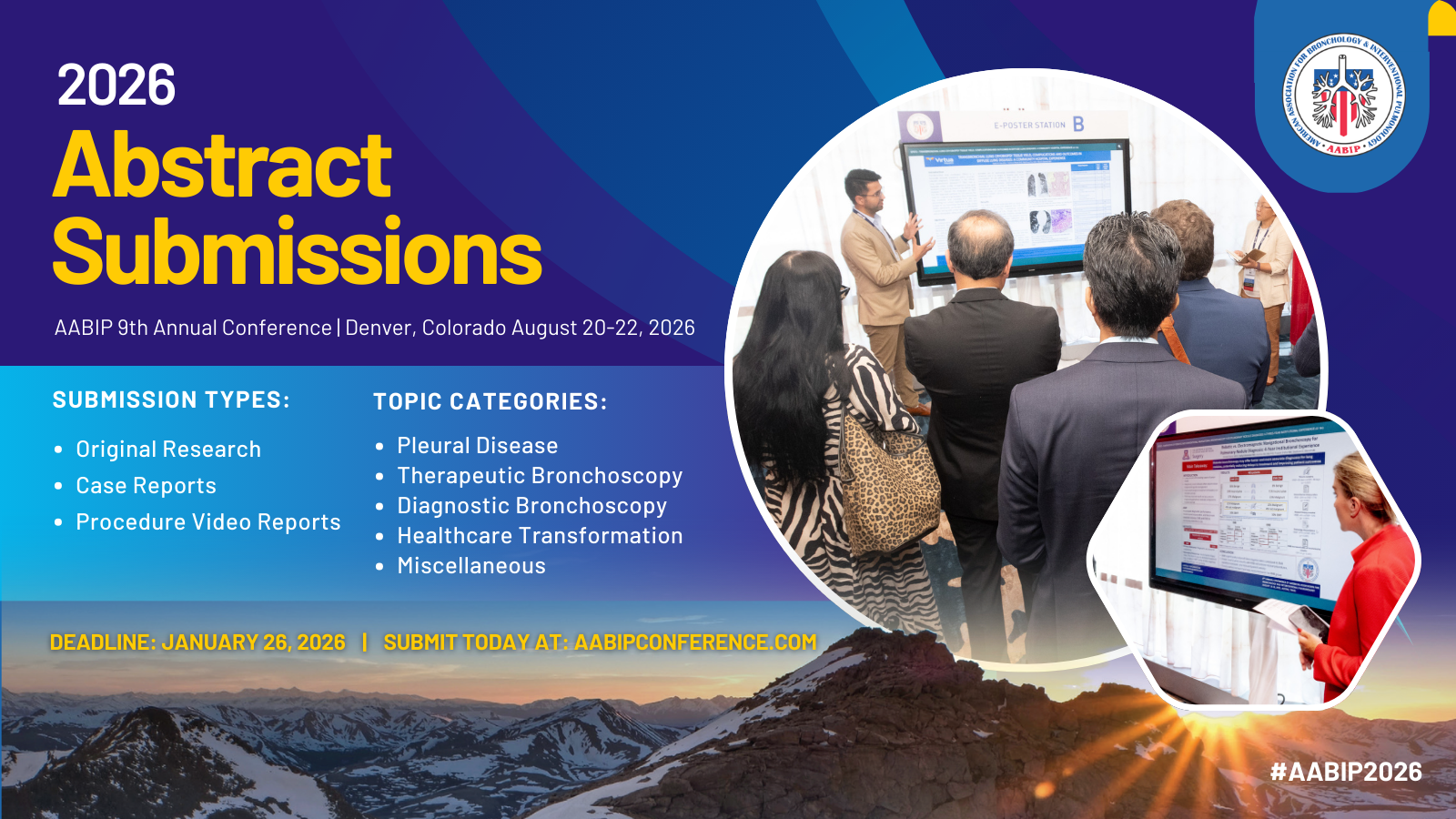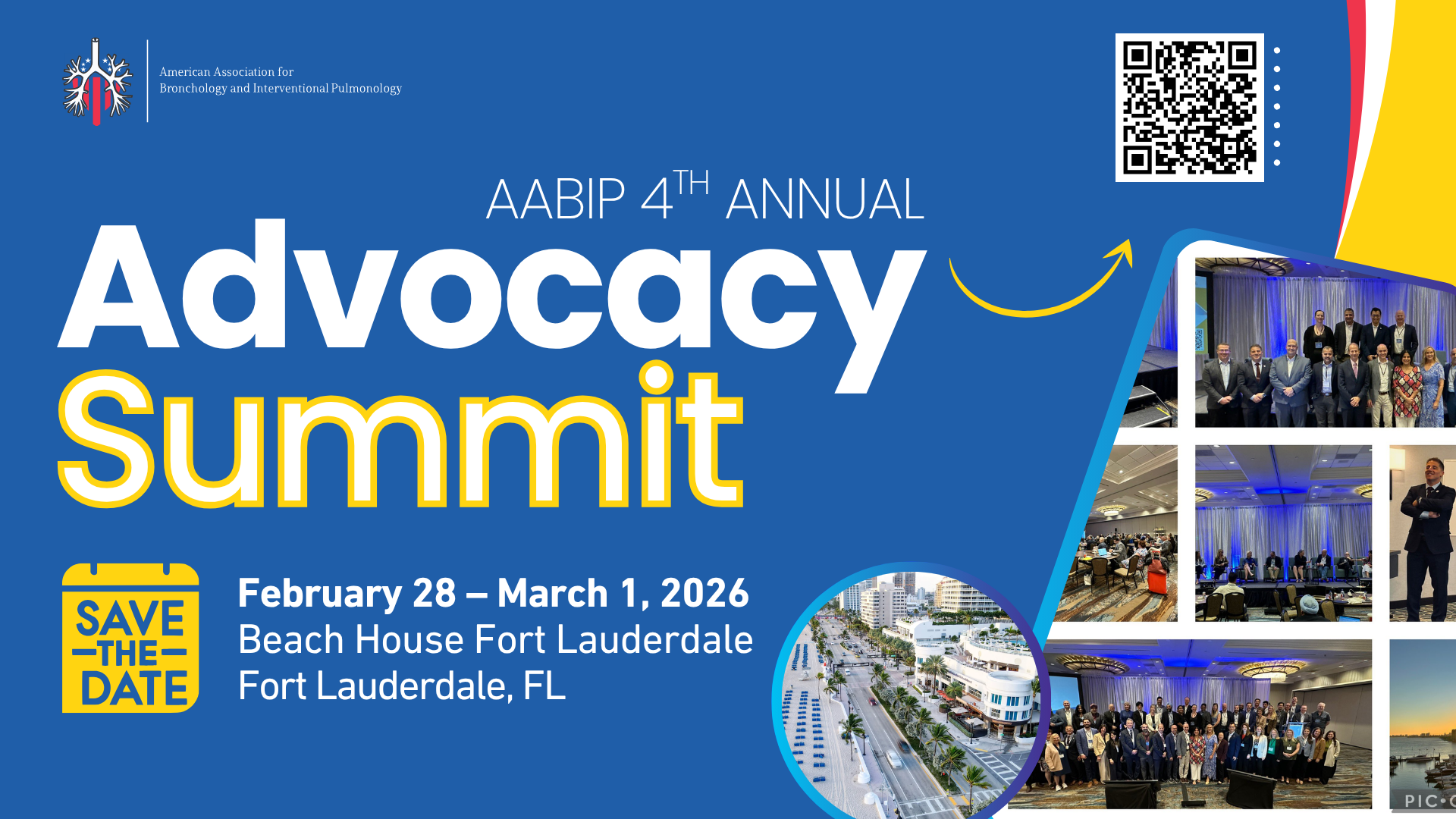IP Fellows Reading List
RIGID BRONCHOSCOPY
The Art of Rigid Bronchoscopy and Airway Stenting
https://www.ncbi.nlm.nih.gov/pubmed/29433711
Review
Reference: Flannery A, Daneshvar C, Dutau H, Breen D. The Art of Rigid Bronchoscopy and Airway Stenting. Clin Chest Med. 2018;39(1):149-167.
Summary: IP is an essential component of thoracic oncology care. Rigid bronchoscopy and airway stenting offer distinct therapeutic advantages but must be carefully applied to select patients with benign and malignant airway disease.
Indications and complications of rigid bronchoscopy
https://www.ncbi.nlm.nih.gov/pubmed/29727208
Review
Reference: Batra H, Yarmus L. Indications and complications of rigid bronchoscopy. Expert Rev Respir Med. 2018;12(6):509-520.
Summary: Rigid bronchoscopy provides ability for large volume suction, better airway control, accurate placement of a wide variety of stents. The availability of different lengths, sizes and various tools makes this ideal for dealing with serious conditions such as central airway obstruction (CAO), foreign body removal and massive hemoptysis. Complications are minimal with well-trained operators.
Rigid Bronchoscopy
https://www.ncbi.nlm.nih.gov/pubmed/30641585
Review
Reference: Diaz-Mendoza J, Peralta AR, Debiane L, Simoff MJ. Rigid Bronchoscopy. Semin Respir Crit Care Med. 2018;39(6):674-684.
Summary: Rigid bronchoscopy is an old technique that has gained importance with the growth of interventional pulmonology. Proper training with solid understanding of equipment, indications, anesthesia and intubation techniques, contraindications and complications are necessary. Standardization of practice is carried out through formal IP training programs. Accreditation exams help maintain academic standards.
Rigid bronchoscopy and silicone stents in the management of central airway obstruction
https://www.ncbi.nlm.nih.gov/pubmed/26807283
Review
Reference: Semaan R, Yarmus L. Rigid bronchoscopy and silicone stents in the management of central airway obstruction. J Thorac Dis. 2015;7(Suppl 4):S352-62.
Summary: Rigid bronchoscopy is an invaluable tool for diagnosis and management of malignant and non-malignant CAO, including deployment of silicone stents. Various types of silicone stents are available and indications, deployment techniques and complications need to be well understood.
Evaluation of Safety and Short-term Outcomes of Therapeutic Rigid Bronchoscopy Using Total Intravenous Anesthesia and Spontaneous Assisted Ventilation
https://www.ncbi.nlm.nih.gov/pubmed/31851991
Retrospective
Reference: Murgu S, Laxmanan B, Stoy S, et al. Evaluation of Safety and Short-term Outcomes of Therapeutic Rigid Bronchoscopy Using Total Intravenous Anesthesia and Spontaneous Assisted Ventilation. Respiration. 2020;99(3):239-247.
Background: The optimal anesthesia and ventilation strategy for rigid bronchoscopy is unknown.
PICO:
Populations:
- Patients (n=55) with CAO, significant comorbidities, and high ASA class, undergoing therapeutic rigid bronchoscopy (79 procedures) at the University of Chicago between Oct 2012 and Dec 2014
Intervention:
- Rigid bronchoscopy with total intravenous anesthesia and spontaneous assisted ventilation
Comparison:
Outcome:
- Majority (76%) of patients did not require neuromuscular blockade. Complications included intraoperative hypoxemia and hypotension. No intraoperative mortality. 30-day mortality can be limited by shortened operative time.
Take Home: Therapeutic rigid bronchoscopy can be safely performed with total intravenous anesthesia and spontaneous assisted ventilation in high risk patients.
Therapeutic bronchoscopy for malignant central airway obstruction: success rates and impact on dyspnea and quality of life
https://pubmed.ncbi.nlm.nih.gov/25741903/
Clinical Trial
Reference: Ost DE, Ernst A, Grosu HB, et al. Therapeutic bronchoscopy for malignant central airway obstruction: success rates and impact on dyspnea and quality of life. Chest. 2015;147(5):1282-1298.
Background: There is limited data on how therapeutic bronchoscopy practice variation affects effectiveness of procedures.
PICO:
Populations:
- 947 patients with malignant central airway obstruction underwent 1,115 procedures as reported in a multicenter registry
Intervention:
- Therapeutic flexible or rigid bronchoscopy
Comparison:
Outcome:
- There are high technical success rates (90-98%) defined as post procedure airway diameter > 50%, however with limited clinical improvement seen based on dyspnea (48%) and QOL (42%) measures. No statistically significant difference in outcomes between flexible and rigid bronchoscopy procedures.
Take Home: Patients with severe dyspnea and lowest functional status, regardless of clinical risk, benefitted the most from therapeutic bronchoscopy. No difference in effectiveness between flexible vs rigid bronchoscopy.
Rigid bronchoscopy
https://pubmed.ncbi.nlm.nih.gov/30641585/
Review
Reference: Diaz-Mendoza J, Peralta AR, Debiane L, Simoff MJ. Rigid bronchoscopy. Semin Respir Crit Care Med. 2018;39(6):674-684.
Summary: Rigid bronchoscopy is an old technology predating flexible bronchoscopy that was championed by Chevalier Jackson and largely finds its role in therapeutic bronchoscopy. The technology has remained relatively unchanged and is comprised of a stainless steel tapered tube with beveled distal tip and variation in light delivery, monitoring, sizes, and accessory introduction. This article reviews the nuances of rigid bronchoscopy.
The art of rigid bronchoscopy and airway stenting
https://pubmed.ncbi.nlm.nih.gov/29433711/
Review
Reference: Flannery A, Daneshvar C, Dutau H, Breen D. The art of rigid bronchoscopy and airway stenting. Clin Chest Med. 2018;39(1):149-167.
Summary: The rigid bronchoscope previously fell out of favor with advances in flexible bronchoscopy, although with implementation of airway lasers with Dr. Lucein Toty as well as airway stenting with Dr. Jean Francois Dumon there has been a resurgence in its use for therapeutic bronchoscopy. This article summaries many specific indications.
Rigid bronchoscopy and silicone stents in the management of central airway obstruction
https://pubmed.ncbi.nlm.nih.gov/26807283/
Review
Reference: Semaan R, Yarmus L. Rigid bronchoscopy and silicone stents in the management of central airway obstruction. J Thorac Dis. 2015;7(Suppl 4):S352-362.
Summary: Excellent review article detailing proper technique for rigid bronchoscopy intubation, anesthetic management during the case, and detailed descriptions of interventions utilized to treat central airway obstructions including “apple-coring,” mechanical excision, microdebrider, and cryotherapy. This article also provides details about multiple types of silicone stents, indications for placement, sizing, stent deployment and troubleshooting during placement. Complications of rigid bronchoscopy in addition to silicone stent placement are also briefly reviewed.
Indications and complications of rigid bronchoscopy
https://pubmed.ncbi.nlm.nih.gov/29727208/
Review
Reference: Batra H, Yarmus L. Indications and complications of rigid bronchoscopy. Expert Rev Respir Med. 2018;12(6):509-520.
Summary: Review article which describes rigid bronchoscopy equipment in detail as well as complications of the procedure including injury to the oropharyngeal structures, laryngeal edema, spinal cord injury, vocal cord/arytenoid injury, airway laceration, and hypoxemia-induced cardiac ischemia and arrhythmias.
Therapeutic bronchoscopy for malignant central airway obstruction: success rates and impact on dyspnea and quality of life
https://pubmed.ncbi.nlm.nih.gov/25358019/
Clinical Trial
Reference: Ost DE, Ernst A, Grosu HB, et al. Therapeutic bronchoscopy for malignant central airway obstruction: success rates and impact on dyspnea and quality of life. Chest. 2015;147(5):1282-1298.
Background: There is significant variation in the practice of therapeutic bronchoscopy, and there is limited data regarding success rates of these interventions as well as impact on patient-centric metrics.
PICO:
Population –
- Utilizing a prospectively obtained registry (AQuIRE) obtained from 15 centers, 947 patients underwent 1115 procedures for central airway obstruction defined as occlusion of ≥50% of the trachea, mainstem bronchi, bronchus intermedius, or lobar bronchus.
Intervention –
- Bronchoscopy performed either through flexible bronchoscopy or rigid bronchoscopy.
Comparison –
Outcome –
- The majority of cases were performed with rigid bronchoscopy (65.7%), and the remainder with flexible (34.3%).
- Technical success to reopen airway lumen to >50% of normal achieved in 93% of procedures.
- Success rates varied by center from 90 to 98% (p=0.02). On multivariate analysis, higher technical success rates achieved when endobronchial obstruction present and stents placed. Lower technical success rates occurred with ASA scores >3, renal failure, primary lung cancer, left mainstem disease, and tracheo-esophageal fistula.
- No difference in success between rigid vs flexible bronchoscopy, or ablative methods
- Dyspnea scores improved following intervention with a Borg score change of 0.9 ± 2.2 (P<0.0001) and higher baseline Borg scores were associated with greater improvements in dyspnea. The subgroups of patients with less improvement in dyspnea included smokers, patients with another primary solid tumor, and patients with lobar obstruction.
- Health-Related Quality of Life scores were measured in 183 pts (19.3% of the total population). These scores improved following intervention with a higher baseline Borg score and not having lobar obstruction with multivariate analysis associations. In the responder analysis, 42% had improvement, 33% stayed the same, and 25% worsened.
Take home: Technical success of reopening airway lumens to >50% of normal has a high success rate ranging between 90 to 98% among centers. This success does not always translate to improvement in symptom scores however including Borg scores (48% improvement) and HRQOL scores (42% improvement). Patients with more significant symptoms (aka higher Borg scores) were more likely to benefit. Patients that were sicker (aka with higher ASA scores >3) were less likely to achieve technical success, although were more likely to have symptom improvement in HRQOL scores.
Complications following therapeutic bronchoscopy for malignant central airway obstruction: results of the aquire registry
https://pubmed.ncbi.nlm.nih.gov/25741903/
Clinical Trial
Reference: Ost DE, Ernst A, Grosu HB, et al. Complications following therapeutic bronchoscopy for malignant central airway obstruction: results of the aquire registry. Chest. 2015;148(2):450-471.
Background: There is significant variation in the practice of therapeutic bronchoscopy, and there is limited data regarding complications associated with these approaches for central airway obstruction.
PICO:
Population –
- 947 patients, 15 centers, 1,115 procedures, derived from the American College of Chest Physicians Quality Improvement Registry, Evaluation, and Education (AQuIRE) program
Intervention –
Comparison –
Outcome –
- Significant differences among centers in type of anesthesia, use of rigid bronchoscopy, type of ventilation, and frequency of stent use
- Overall complication rate was 3.9%; varied among centers
- Risk factors for complications were urgent and emergent procedures, ASA score >3, redo therapeutic bronchoscopy, moderate sedation
- 30-day mortality was 14.85; varied among centers
- Risk factors for 30-day mortality included Zubrod score >1, ASA score > 3, intrinsic or extrinsic obstruction, stent placement
Take home: There is practice variation among centers. Therapeutic bronchoscopy is a safe intervention for central airway stenosis with an overall complication rate of 3.9% and risk of death attributed to complications of 0.5%. Use of flexible bronchoscopy or therapeutic bronchoscopy are equally safe. Use of general anesthesia or deep sedation over moderate sedation may ultimately reduce complications. Stent use was associated with increased 30-day mortality.
Evaluation of safety and short-term outcomes of therapeutic rigid bronchoscopy using total intravenous anesthesia and spontaneous assisted ventilation
https://pubmed.ncbi.nlm.nih.gov/31851991/
Retrospective
Reference: Murgu S, Laxmanan B, Stoy S, et al. Evaluation of safety and short-term outcomes of therapeutic rigid bronchoscopy using total intravenous anesthesia and spontaneous assisted ventilation. Respiration. 2020;99(3):239-247.
Background: There is limited information regarding optimal types of anesthesia and ventilation performed during rigid bronchoscopy. This review assesses the safety of utilizing total IV anesthesia and spontaneous assisted ventilation. Additional focus is made on neuromuscular blocker use in the setting of central airway obstruction with expected central airway collapse.
PICO:
Population –
- Single-center study at University of Chicago between 2012 – 2014 with 55 pts undergoing 79 rigid bronchoscopies. Malignant disease in 90% and ASA III vs IV in 90% of patients. Home oxygen use in 33% and CHF in 10%.
Intervention –
- Rigid bronchoscopy performed with total IV anesthesia and spontaneous assisted ventilation. A wide variety of modes employed including the use of volatile inhalational anesthetics (during induction only) and either continuous infusion or intermittent injection of IV anesthetics. NMB utilized if refractory coughing and/or biting despite maximum doses of IV agents.
Comparison –
Outcome –
- Regarding anesthesia, 23% utilized volatile inhalational anesthesia during induction, 24% utilized NMB, and propofol infusion was used in all cases.
- The majority of cases were performed with manual/assisted ventilation (70.9%) with 50.6% of cases undergoing spontaneous ventilation.
- None of these cases were performed with jet ventilation.
- The majority of patients were discharged home (94.4%).
- Univariate analysis noted intra-operative hypoxemia associated with a malignant etiology, pre-existing coronary artery disease, placement of an airway stent, procedure duration longer than 100 min.
- Mortality rate of 7.6% within 30 days of the procedure and were associated with older age, inpatient status, pre-existing CHF, pre-existing home oxygen use, and a longer duration of procedure.
- There were no associations with intra-operative hypoxemia and hypotension.
Take home: Rigid bronchoscopy can be safely performed using total IV sedation anesthesia and can safely be supplemented with induction inhalational anesthesia as well as neuromuscular blockade. Use of ventilation strategies without jet ventilation including 50.6% of patients undergoing spontaneous ventilation did not substantially increase 30-day mortality compared to the AQuIRE registry. The only procedural factor that can impact 30-day mortality is the duration of the procedure which should be kept shorter than 100 minutes if able.
Development of a tool to assess basic competency in the performance of rigid bronchoscopy
https://pubmed.ncbi.nlm.nih.gov/26989810/
Clinical Trial
Reference: Mahmood K, Wahidi MM, Osann KE, et al. Development of a tool to assess basic competency in the performance of rigid bronchoscopy. Ann Am Thorac Soc. 2016;13(4):502-511.
Background: This is the first rigid bronchoscopy assessment tool created to perform an objective, competency-oriented assessment of basic rigid bronchoscopy skills including intubation and central airway navigation. This study was performed to assess whether this tool could discriminate between levels of training and provide adequate interrater reliability by different proctors.
PICO:
Population –
- 30 physician volunteers were selected from two separate academic centers. These included novice, intermediate, and expert bronchoscopists
Intervention –
- All participants performed rigid intubation and various maneuvers on a mannequin. Each participant was independently evaluated by two examiners using the RIGID-TASC 23-point checklist
Comparison –
- IGID-TASC scores between the three groups – as well as the interrater reliability of two different examiners
Outcome –
- There was a significant difference between scores obtained for novice and intermediate operators, as well as between intermediate and expert operators. The interrater reliability was also high.
Take home: Given increasing concern for procedural competence of trainees, the RIGID-TASC checklist can be employed to ensure basic aspects of rigid bronchoscopy can be accurately assessed and provide guidance to trainees regarding next steps. This checklist can successfully discriminate individuals into three categories: novice, intermediate, and expert.
Variable learning curve of basic rigid bronchoscopy in trainees
https://pubmed.ncbi.nlm.nih.gov/33849039/
Clinical Trial
Reference: Mahmood K, Wahidi MM, Shepherd RW, et al. Variable learning curve of basic rigid bronchoscopy in trainees. Respiration. 2021;100(6):530-537.
Background: There is limited information on clinical trainee performance in rigid bronchoscopy. Multiple professional societies have recommended a 20-procedure threshold for achieving competency with limited data to support a numeric-threshold criteria.
PICO:
Population –
- 12 novice IP fellows at 4 US training programs
Intervention –
- All participants were scored using the RIGID-TASC while performing rigid bronchoscopy during clinical training with the goal of achieving the criteria for basic competency threshold. Basic competency threshold was defined as a successful rigid bronchoscopy intubation and central airway navigation at the first attempt without a supervisor’s help and a minimum score of 89/100 on 3 consecutive procedures.
Comparison –
- Comparison in individual trainees between the pre-patient contact training (lecture and rigid bronchoscopy simulation on manikin and rigid bronchoscopy practice on cadaver at the IP Boot Camp) and the timeline of achieving basic competency threshold.
Outcome –
- Trainees achieved basic competency threshold at the following rates: 25% at 9 rigid bronchoscopies, 50% at 15 rigid bronchoscopies, 75% at 20 rigid bronchoscopies, and 100% at 24 rigid bronchoscopies.
- Subtasks that were more difficult to complete included: intubating the patient on the first attempt and completing the intubation within one minute.
Take home: There is variability in the rate that trainees acquire various skillsets including rigid bronchoscopy. The use of the RIGID-TASC assessment tool can provide guidance to programs regarding achieving a basic competency threshold. For most trainees, the previously determined number of 20 rigid bronchoscopies is adequate for basic competency, although some trainees may require additional procedures to achieve this milestone.
Multi-institutional retrospective analysis of adverse events following rigid tracheobronchoscopy
https://pubmed.ncbi.nlm.nih.gov/32537884/
Retrospective
Reference: Fortin M, Yarmus L, Rendina EA, et al. Multi-institutional retrospective analysis of adverse events following rigid tracheobronchoscopy. Respirology. 2021;26(1):87-91.
Background: Rigid bronchoscopy has seen an increased interest with the emergence of interventional pulmonology. No benchmark currently exists for complications in rigid bronchoscopy.
PICO:
Population –
- 1546 rigid bronchoscopies performed at 8 centers
Intervention –
Comparison –
Outcome –
- 131 non-lethal complications in 103 procedures
- Peri-procedural mortality rate was 1.2%
- 30-day mortality rate was 5.6%
- Complication rate increased when performed in an emergency setting
- Procedures for malignant airway obstruction are associated with higher 30-day mortality (8.1% vs 2.7%, p < 0.01)
Take home: In this multicenter cohort of malignant and benign airway disease, rigid bronchoscopy was associated with a 6.7% non-lethal complication rate and 1.2% periprocedural mortality rate.
|








